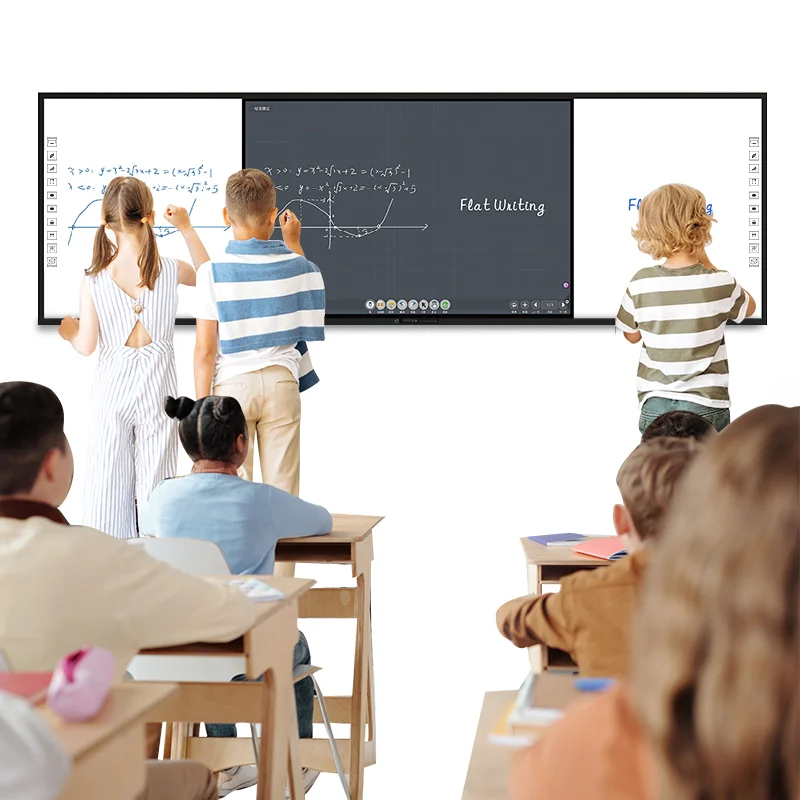The integration of technology into education has transformed traditional teaching methods, particularly in Science, Technology, Engineering, Arts, and Mathematics (STEAM) education. Interactive blackboards enhance interactive learning, promote student engagement and improve teaching efficiency. In this blog post, as a high quality one stop interactive flat panel ODM, Orgscreen will share how does LED recordable smart blackboard improve STEAM teaching quality, providing real-time recording function, dynamic visualization and interactive learning environment to promote a higher quality education environment.
Role of LED Recordable Smart Blackboard in STEAM Education
STEAM subjects rely on dynamic teaching methodologies that require visualization, interaction, and real-time problem-solving. Traditional chalkboards or whiteboards, while useful, often fall short in providing interactive and digital content management. The LED recordable smart blackboard addresses these shortcomings by incorporating advanced features such as digital writing, multimedia integration, and data storage.
1. Enhancing Visual Learning with Digital Annotations
One of the most significant advantages of an LED recordable smart blackboard is its ability to enhance visual learning. Unlike traditional blackboards, which rely on static handwritten content, smart blackboards allow teachers to integrate diagrams, graphs, and videos seamlessly.
- Dynamic Illustrations: Teachers can draw intricate diagrams and mathematical models with precision, enabling students to grasp complex concepts more effectively.
- Color-Coded Annotations: The ability to use different colors helps highlight key concepts, differentiate components, and emphasize critical learning points.
- High-Resolution Display: LED screens provide superior clarity, making it easier for students to read content, even from the back of the classroom.
2. Interactive Learning Through Smart Features
Interactivity is a crucial component of STEAM education. The LED recordable smart blackboard fosters an interactive learning environment by allowing direct student participation.
- Touchscreen Functionality: Students can interact with the board by solving problems, manipulating digital objects, and engaging in collaborative exercises.
- Augmented Reality (AR) and Simulations: Some smart blackboards support AR applications, allowing students to visualize molecular structures, conduct virtual dissections, or simulate physics experiments.
- Gamification of Learning: Integrated educational games make learning more engaging and help reinforce concepts through practical applications.

3. Real-Time Recording and Content Storage
One of the most innovative features of an LED recordable smart blackboard is its ability to record lessons in real time.
- Lesson Recording for Revision: Students can revisit recorded lectures to reinforce learning, which is particularly beneficial for complex subjects such as calculus or engineering mechanics.
- Cloud Storage and Accessibility: Recorded content can be saved in the cloud, making it accessible to students anytime, anywhere. This feature is invaluable for distance learning and flipped classroom models.
- Automated Note-Taking: Some smart blackboards offer text conversion features that automatically transcribe handwritten notes into digital text, ensuring better organization and accessibility.
4. Seamless Integration with Other Educational Tools
STEAM teaching often involves multiple learning tools such as laptops, tablets, and projectors. LED recordable smart blackboards seamlessly integrate with these devices, enhancing teaching efficiency.
- Wireless Connectivity: Teachers can connect the smart blackboard with students' devices, allowing real-time content sharing and collaboration.
- Integration with Learning Management Systems (LMS): Content from the blackboard can be directly uploaded to platforms like Google Classroom or Moodle, simplifying resource management.
- Remote Teaching Capabilities: Teachers can conduct virtual classes by sharing their smart blackboard screens with students who are attending remotely.
5. Promoting Collaborative and Project-Based Learning
STEAM education encourages collaboration and project-based learning, which are significantly enhanced by smart blackboards.
- Group Brainstorming Sessions: Students can collectively brainstorm ideas on the board, improving teamwork and creativity.
- Real-Time Code Execution: For computer science classes, some smart blackboards support programming environments, allowing students to write, execute, and debug code directly.
- Multidisciplinary Applications: The flexibility of smart blackboards allows them to be used across different STEAM disciplines, from architectural sketching to circuit design simulations.
Conclusion
LED recordable smart blackboards have revolutionized STEAM education by making lessons more interactive, accessible, and engaging. Their ability to support digital annotations, integrate multimedia, enable real-time recording, and foster collaboration significantly enhances the quality of teaching and learning in STEAM disciplines. Despite some challenges, the benefits of these smart blackboards make them a valuable addition to modern educational institutions. As technology advances, their role in education will only continue to expand, making learning more immersive and effective for future generations.
www.orgscreen.com
Orgscreen
